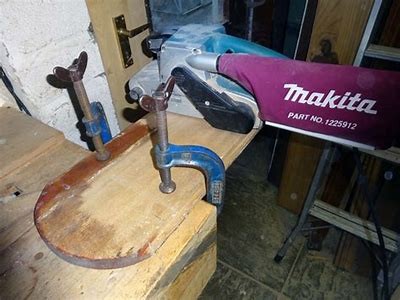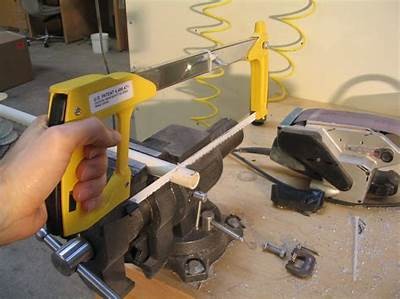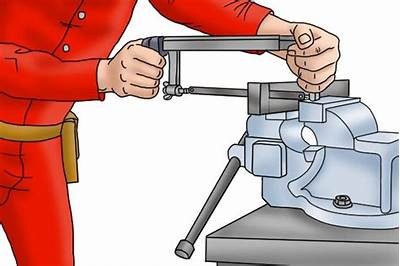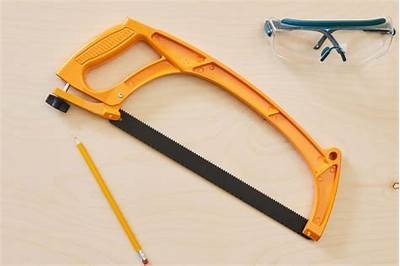Creative Ways to Use a Hacksaw for Cutting Cheese Effectively and Easily
Introduction to Creative Cheese Cutting Techniques
Cheese is a beloved delicacy enjoyed across the globe, ranging from soft and creamy varieties to hard and aged types. When it comes to cutting cheese, many people rely on conventional cheese knives or wire cutters. However, there’s an unexpected tool that can effectively slice through this dairy delight: the hacksaw. In this article, we will explore the innovative ways to use a hacksaw for cutting cheese, ensuring that every bite is effortless and enjoyable.

Understanding the Hacksaw
A hacksaw is a versatile tool primarily used for cutting metal and plastic. It consists of a frame, a blade, and a handle. The blade is finely serrated, making it perfect for slicing through hard materials with precision. While it may not be an everyday choice for the kitchen, its sharpness and structure lend themselves to interesting applications in cheese slicing.

Why Use a Hacksaw for Cheese?
One might wonder why a hacksaw would be chosen over traditional cheese-cutting tools. There are several compelling reasons:

- **Precision Cutting:** The fine blades of a hacksaw allow for smooth, clean cuts, minimizing waste.
- **Versatility:** Hacksaws can easily handle both hard and soft cheeses, making it a one-stop cutting tool.
- **Unconventional Fun:** Using a hacksaw for cheese can add an element of surprise and fun to your culinary adventures.
Preparing Your Hacksaw for Cheese Cutting
Before you start slicing cheese, it’s essential to prepare your hacksaw correctly:

- **Clean the Blade:** Ensure the blade is clean and free from any debris or residue from prior use. This prevents unwanted flavors from transferring to your cheese.
- **Choose the Right Blade:** Select a hacksaw blade that is fine-toothed for softer cheeses and a medium-toothed blade for harder varieties.
- **Secure Your Workspace:** Make sure you have a stable, clean cutting surface to work on. Safety is paramount!
Cutting Techniques for Different Cheeses
Slicing Hard Cheeses
Hard cheeses, such as Parmigiano-Reggiano or aged Gouda, can be challenging to cut with standard knives. A hacksaw can make this process easier:

- **Use Long, Steady Cuts:** Apply even pressure as you guide the blade through the cheese, focusing on making long cuts to maintain the integrity of the pieces.
- **Utilize the Frame:** The frame of the hacksaw enables you to leverage force, allowing for easier slicing through tough cheese.
Slicing Soft Cheeses
For soft cheeses like Brie or Camembert, caution is needed as they can squish easily. Here’s how to use a hacksaw effectively:
- **Minimal Pressure:** Gently guide the hacksaw without applying too much pressure, allowing the serrated blade to do the work.
- **Angle Your Cuts:** Sometimes a slight angle can help retain the shape of the cheese while still giving you beautiful slices.
Adding Flair to Your Cheese Presentation
Using a hacksaw doesn’t just change the cutting method; it can also enhance your cheese presentation:
- **Unique Shapes:** Experiment with different cutting angles and techniques to create interesting shapes and sizes.
- **Themed Occasions:** For parties or events, use themed cheeses and a hacksaw for an unexpected twist that sparks conversation.
Safety Tips When Using a Hacksaw
Working with a hacksaw requires caution to ensure safety in the kitchen:
- **Keep Hands Clear:** Always keep hands and fingers away from the cutting line.
- **Stable Surface:** Ensure your cutting surface is stable to prevent slipping.
- **Wear Gloves:** If necessary, wear protective gloves to prevent any minor cuts.
Cleaning Your Hacksaw After Use
Post-cutting, it’s important to clean your hacksaw properly:
- **Disassemble the Blade:** Remove the blade for thorough cleaning.
- **Wash with Soap:** Use warm soapy water to clean the blade, ensuring no cheese residue remains.
- **Dry Completely:** Allow the blade and frame to dry completely before reassembling.
Innovative Cheese Pairings
While cutting cheese with a hacksaw might be the main highlight, consider pairing your cheese cuts with various accompaniments:
- **Fruits and Nuts:** Pair your cheese with fresh fruits or a selection of nuts for a delightful contrast.
- **Spreads and Dips:** Offer dips or spreads such as honey, jams, or fig spreads to enhance flavor profiles.
Conclusion
Using a hacksaw for cutting cheese may seem unconventional, but it opens up new avenues for creativity in the kitchen. It provides precision, versatility, and a fun way to engage with this favorite food. Whether you are hosting a gathering or just indulging in a personal cheese board, consider the hacksaw as your new cheese companion!
Related Tags




